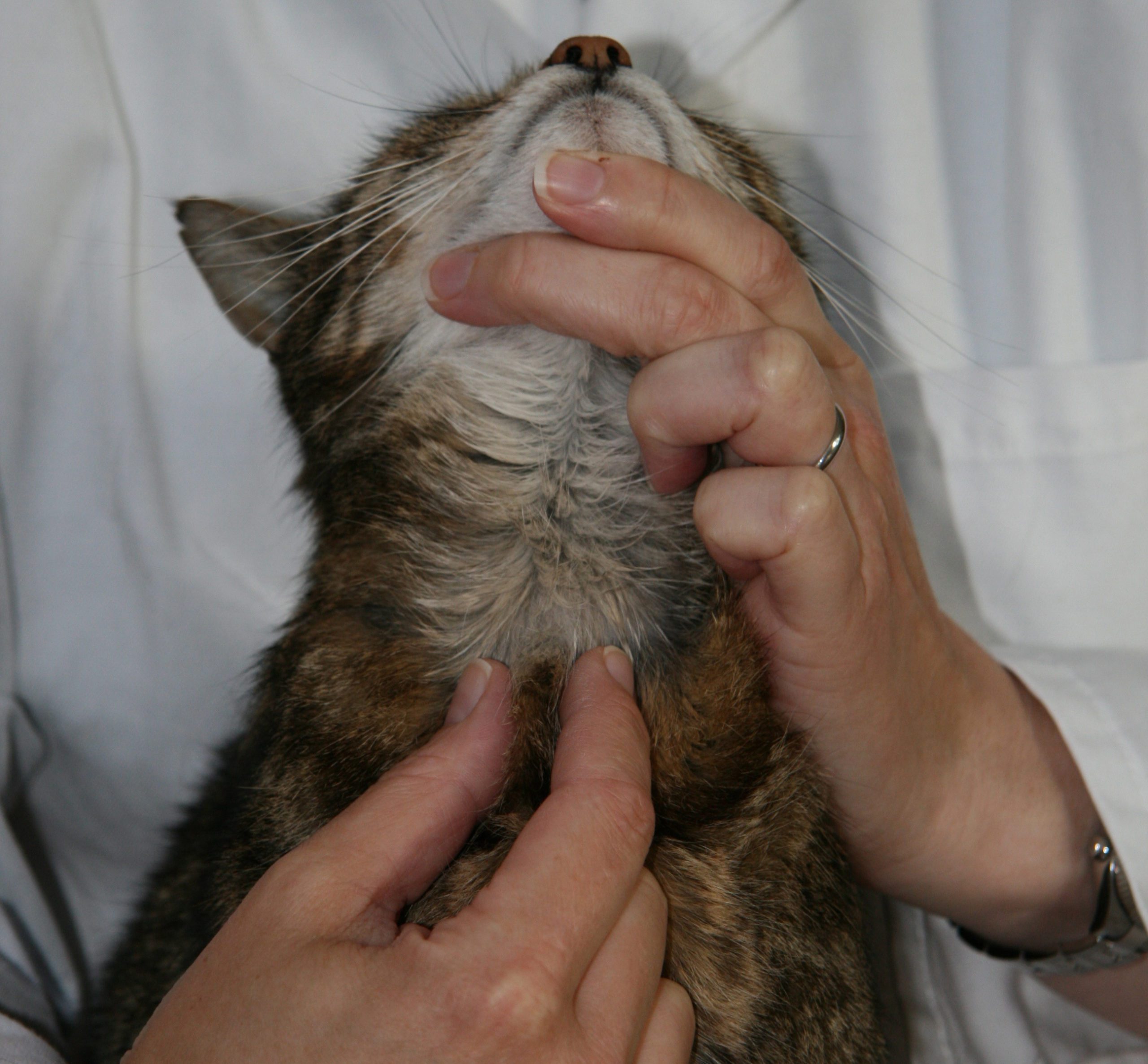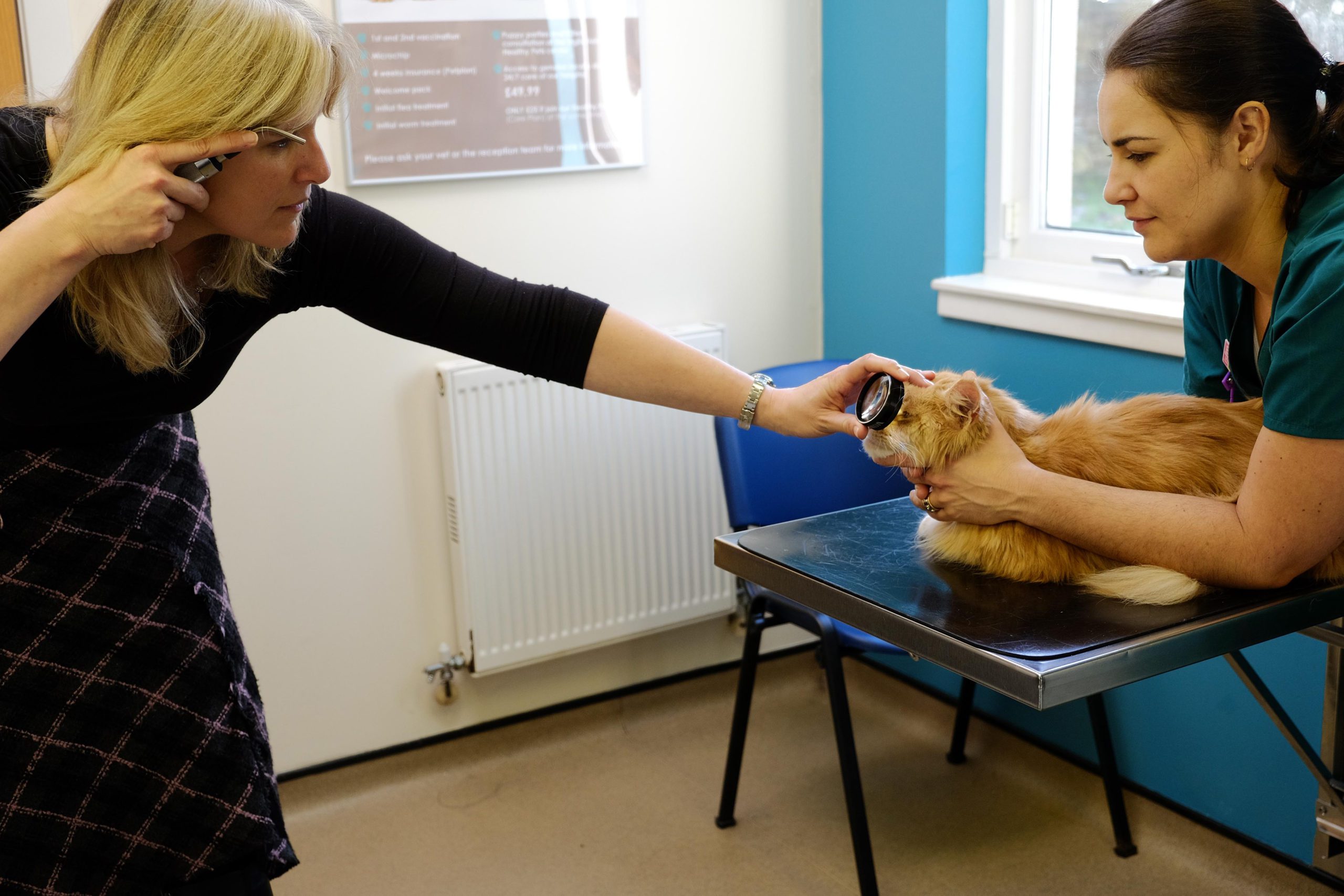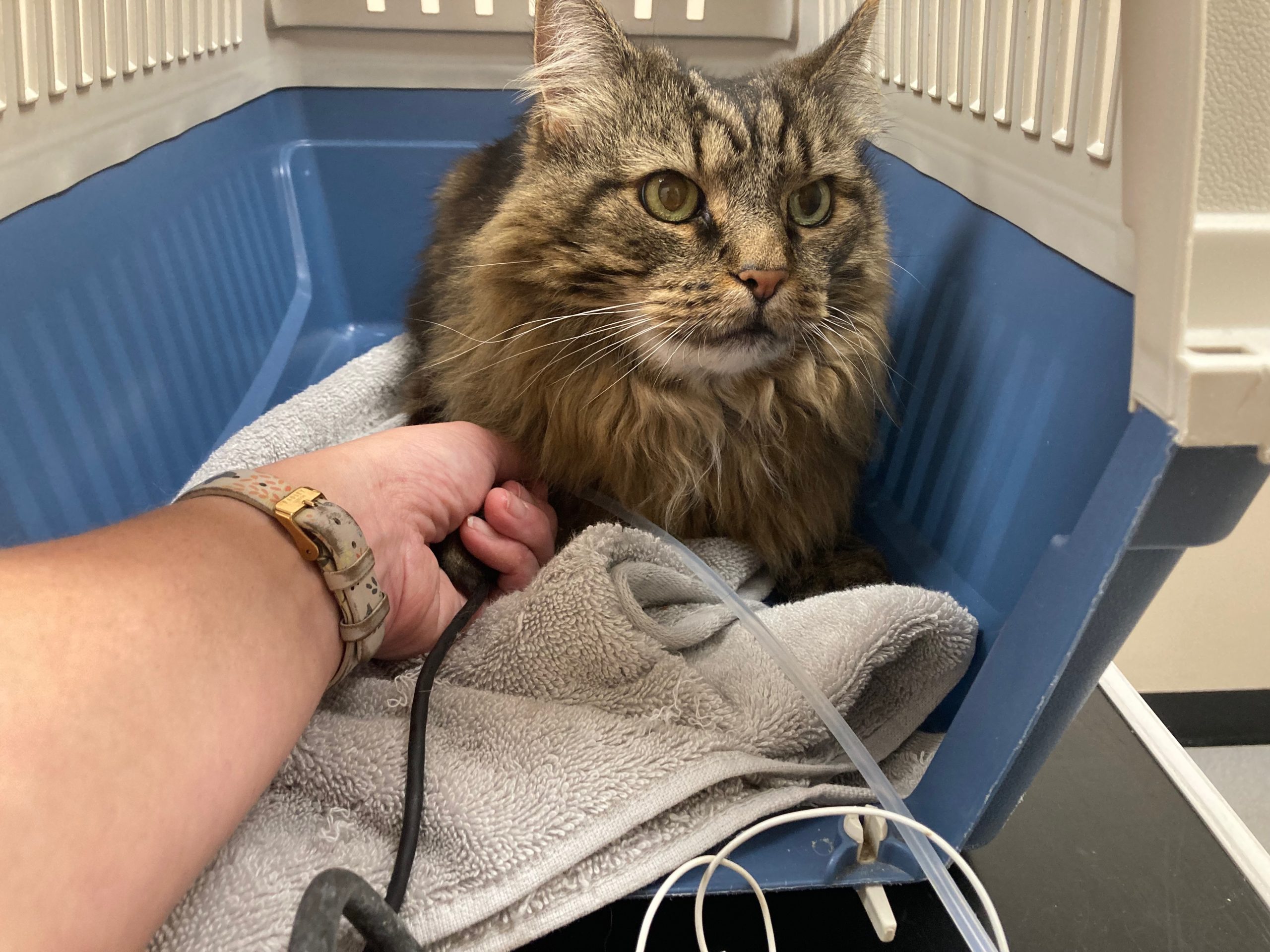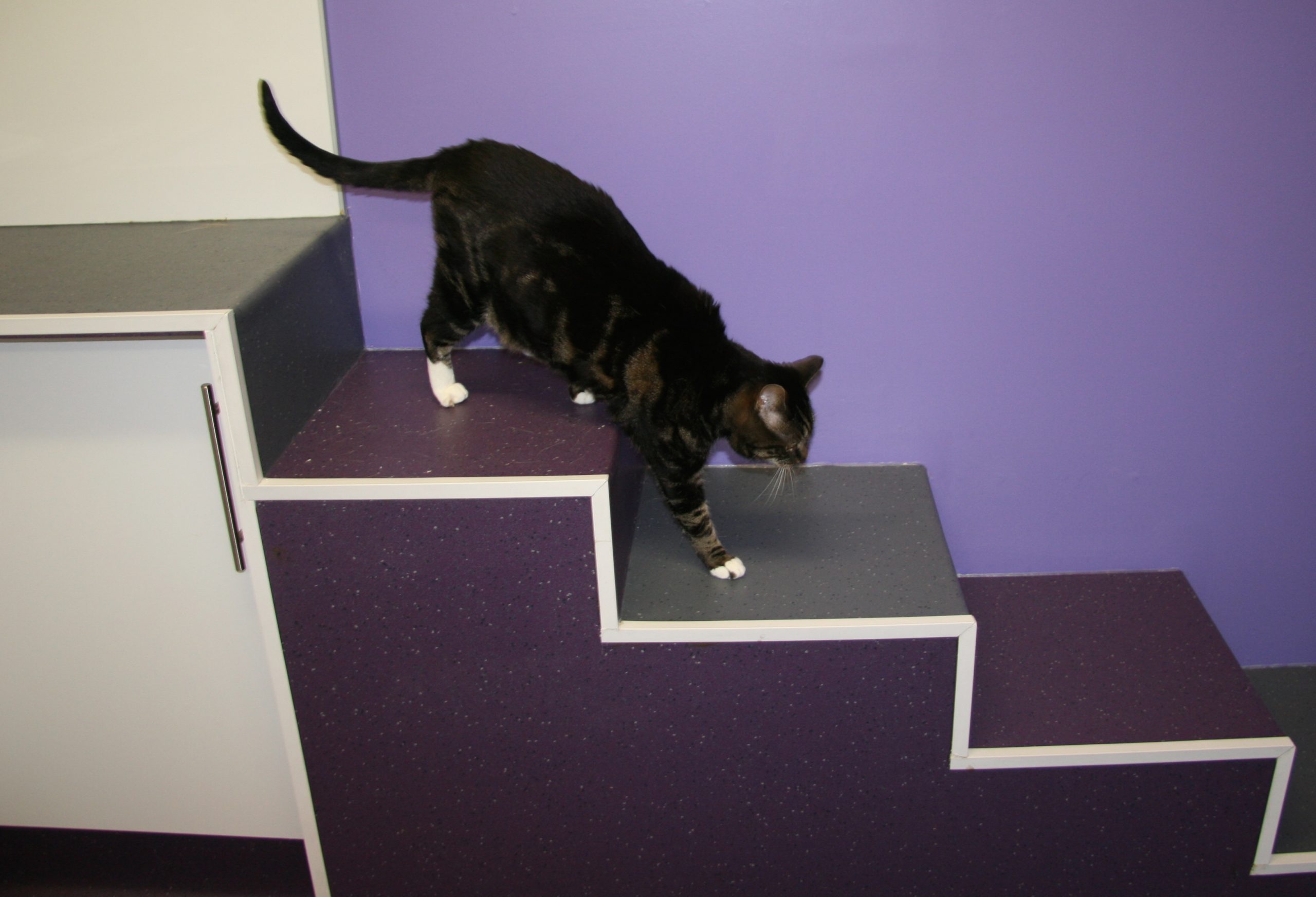13 Oct 2023
Senior cats – an update on key conditions, treatment and more
Sarah Caney emphasises the need for regular preventive health checks for this age group of felines, as well as the ways vets can advise owners to improve their care at home

Senior cats are those aged 11 years and older. Life expectancy of cats has increased over the years, and it is no longer unusual to see a cat in its late teens or twenties.
Regular preventive health care checks are useful in facilitating earlier diagnosis of illness, but attention to general care at home is also important to maintain quality of life. A number of medical conditions are more common in senior cats, and senior cats frequently have two or more concurrent issues benefiting from veterinary attention.
Keywords: toileting, grooming, consults, OA, CKD
The charity International Cat Care defines a senior cat as being aged 11 years and older.
Recently, the “geriatric” life stage (cats aged 15 years and older) was redefined as “super senior”.
What are the most common conditions affecting senior cats?
| Table 1. Common conditions affecting senior cats | |
|---|---|
| Illness | Comment |
| Constipation | |
| Deafness | |
| Degenerative joint disease (DJD) | A number of publications have indicated that radiographic evidence of DJD is present in almost all senior cats |
| Dementia, also known as “cognitive dysfunction syndrome” | The age-related deterioration in brain function, which results in behavioural changes such as toileting accidents, increased vocalisation, confusion, forgetfulness and altered sleep patterns. This is estimated to affect more than 50% of cats above the age of 15 years |
| Dental disease | |
| Diabetes mellitus | Estimated to affect up to 1% of cats |
| Hyperthyroidism | Estimated to affect about 10% of senior cats |
| Chronic kidney disease | Estimated to affect about 30% of cats above the age of 15 years |
| Neoplasia | |
| Systemic hypertension | Estimated to affect at least 20% of senior cats |
Some of the common medical conditions affecting senior cats are listed in Table 1.
Many of these conditions are complex to manage and can occur concurrently, further complicating care.
What general tips should carers of older cats follow?
Toileting
The author recommends all senior cats have access to a litter box, regardless of whether their previous preference has been to toilet outdoors.
Many common health problems affecting older cats result in polyuria; if a litter tray/toileting area is not easy to access, toileting accidents are a possible consequence; therefore, providing a tray is often appreciated by the cat. Similarly, cats with dementia may forget where their normal toilet is; providing a litter box in the area of the home they spend time in helps to prevent toileting accidents.
Lastly, many older cats have degenerative joint disease that can make accessing a normal toileting location difficult or painful, and therefore, may appreciate an indoor litter box. The litter box should be roomy (1.5 times the cat’s length from nose to tail base in length), easy to access (for example, having at least one low side) and placed in a quiet and private location.
The preferred substrate for most cats is a clumping, sandy consistency litter that is comfortable for them to stand on and easy to keep clean through scooping clumps and faeces at least twice a day. The tray should be completely emptied and cleaned at least once a week. An advantage of clumping litter is that it facilitates monitoring of size and amount of urine passed each day, which is helpful in future history taking and health monitoring.
Healthy cats typically pass urine two to three times a day and faeces once a day. A reduction in frequency of defecation and passing firm/dry faeces can indicate dehydration in older cats, and is relatively common in cats with chronic kidney disease (CKD).
Affected cats benefit from strategies to improve hydration and soften their faeces, including – for example – tactics to encourage drinking (discussed at a further point in this article), and use of oral osmotic laxatives such as polyethylene glycol 3350.
Carers should monitor the litter tray for changes in urination and defecation habits. Presence of blood in the urine or stools, altered consistency of stools, malodorous urine or any other changes should be reported to the vet clinic if seen.
Nail maintenance
Carers should be advised to keep an eye on their cat’s nails. Elderly cats are less able to retract their claws and, if less active, may not “strop” their nails as frequently or effectively. This can easily lead to the nails becoming thickened and overgrown.
The overgrown nails can become snagged in furniture or carpets, and may cause discomfort. In worst cases, the nails may grow into the food pad.
Depending on the individual, regular trimming may be needed.
Grooming
Older cats are less able to groom efficiently and may, therefore, benefit from grooming assistance at home. This may include wiping ocular and nasal discharges, and brushing the coat with a soft brush.
Care needs to be taken to ensure grooming is gentle in cats with poor body condition and those with painful underlying conditions, such as osteoarthritis (OA).
Soft rubber grooming gloves (or even washing up gloves) can be used to massage the skin and coat, and remove loose hairs – elderly cats often love this. Attention to grooming can also help to minimise hairball problems.
Eating
Reduced sense of taste and smell contributes to reduced food intake in older cats, and reduced ability to digest fat and proteins can also contribute to weight loss.
Affected cats may benefit from support including a change in diet (to one more palatable and of greater nutritional value), and more easy access to food (for example, more frequent meals or food in multiple locations in the home).
Raising the food bowls can be helpful in supporting cats with degenerative joint disease (DJD) that may find it painful crouching to eat food at floor level.
Drinking
Many older cats have higher fluid requirements due to medical conditions, resulting in polyuria (most commonly CKD, hyperthyroidism and diabetes mellitus).
Elderly cats tend to have reduced thirst reflexes, which also makes them more vulnerable to dehydration.
Tactics that encourage regular/easy access to water, such as having multiple bowls around the house and raising the bowls for cats with DJD, should be considered. Most cats prefer to drink from metal, glass or ceramic containers, and these should be filled completely so the cat does not have to insert its head into the container to drink (cats typically dislike their whiskers touching the side of the food or water bowl).
It can be worth experimenting with different types of container to find one that the cat prefers, experimenting with the water offered (tap versus collected rainwater versus mineral water), seeing if the cat likes drinking from a water fountain or other moving water source, and considering other drinks the cat might like (for example, food with a hydration supplement, generic cat soups or homemade options such as prawns liquidised in water). Many cats tolerate water being added to their normal food.
What veterinary care of a senior cat is considered appropriate?
The author follows the Cat Care for Life guidelines proposed by International Cat Care (Table 2).
| Table 2. Life stage appropriate recommendations for veterinary care of senior cats, developed by International Cat Care in its Cat Care for Life guidelines, available via www.catcare4life.org | |||
|---|---|---|---|
| Age of cat | Life stage | Frequency of check | What is evaluated? |
| 11 to 14 years | Senior | 6 to 12-monthly |
History General physical examination Bodyweight and body condition score Blood tests1 Urinalysis2 Blood pressure3 |
| 15 years and older | Super senior (formerly geriatric) | Six-monthly |
History General physical examination Bodyweight and body condition score Blood tests1 Urinalysis2 Blood pressure3 |
| 1. Blood tests: haematology, serum biochemistry and ideally an IDEXX symmetric dimethylarginine test. Serum biochemistry should include, where possible, urea, creatinine, alanine transaminase, alkaline phosphatase, electrolytes (sodium, potassium, calcium and phosphate) and proteins. Add a total T4 once the patient is 11 years and older (sooner if any concerns exist). |
|||
| 2. Urinalysis: dipstick and refractometer (urine specific gravity). Free catch or cystocentesis samples are acceptable for the initial urinalysis. | |||
| 3. Blood pressure: Doppler methodology preferred for assessment of blood pressure in conscious cats. High definition oscillometry methodology also considered acceptable by icatcare.org | |||
| Also note: the author recommends a general health check (history, physical examination and bodyweight assessment) is done every six months in apparently healthy senior cats, and every three months in apparently healthy super senior cats where possible. |
|||
These recommend that senior cats (those aged 11 years and older) have a preventive health care check, including blood, urinalysis and blood pressure assessment, every 6 to 12 months.
Cystocentesis urine collection is usually straightforward in senior cats and, therefore, can be done in the consulting room, as long as the bladder is palpable.
The author prefers to see super senior cats every three months if possible, checking blood pressure and urinalysis every six months, and blood profiles every six to 12 months. Health questionnaires are useful in spotting any problems and in teaching carers what signs to look out for (Table 3).
| Table 3. Health questions for carers of senior cats | ||||
|---|---|---|---|---|
| Have you noticed any change in your cat’s… | Yes | No | Not sure | Please feel free to note any further comments below |
| Thirst? | ||||
| Appetite? | ||||
| Eating? | ||||
| Breath? | ||||
| Weight? | ||||
| Behaviour? | ||||
| Mobility or agility? | ||||
| Energy levels? | ||||
| Urination or defecation? | ||||
| Grooming? | ||||
| Coat condition? | ||||
| Breathing? | ||||
| Body condition? | ||||
| Eyes, ears and nose? | ||||
| Eyesight? | ||||
| Claws? | ||||
| Anything else? | ||||
For cats that are anxious and fearful about visits to the clinic, pre-visit gabapentin can be helpful. At the moment, neither gabapentin nor pregabalin are authorised for use in cats in the UK, although several published reports of their use exist (van Haaften et al, 2017).
In healthy cats, the author recommends a dose of 20mg/kg given by mouth or in a small amount of food, two hours before the cat is due to be put into its carrier. Gabapentin is more slowly metabolised in cats with CKD, so dose reduction (for example, 10mg/kg dose) is recommended when this is known or suspected (Quimby et al, 2022).
Very anxious cats are best transported in hard plastic carriers that have removal tops, so the cat has the choice of remaining in the base of the carrier while being examined.
What should an ideal senior consult include?
A thorough history should always be taken and this should include questions on mobility/agility; behaviour, including toileting accidents; cognitive function/signs of dementia; and questions about visual deficits, in addition to standard history questions (Table 3).
Physical examination should start with measurement of systolic blood pressure, preferably with the cat still sitting in their carrier (Figure 1) and minimally restrained by its carer, if required.
Mobility assessments are often not practically possible within the consultation, but can be helpful (Figure 2).
Other key aspects of the assessment include weight assessment, palpation for a goitre (Figure 3) and fundus examination (Figure 4).

What’s new in senior cat care?
Happily, conditions affecting senior cats are often topics for research and, therefore, our understanding of many complex conditions improves all the time. Open access senior care guidelines have been updated and expanded (Ray et al, 2021). Pain recognition and management options have improved in recent years, with the first feline monoclonal antibody treatment authorised for treatment of pain associated with OA in cats (Gruen et al, 2021; Steagall et al, 2022).
Other recent developments not exclusive to senior cats, but certainly benefiting their care, include improved understanding of feline behaviour and guidelines on cat friendliness (Roden et al, 2022; Taylor, 2022a).
Improved knowledge and medications relating to support of inappetent cats have also been published (Taylor et al, 2022b), with licensed medications available to stimulate appetite also now available in many countries.

Managing cats with concurrent conditions
Management of cats with concurrent conditions is often challenging.
The author’s approach is, where possible, to prioritise the care according to which condition is impacting the cat the most; for example, in a cat with diabetes mellitus and early/mild CKD, a diabetic diet with a phosphate binder may be more effective in managing the cat’s clinical signs than a therapeutic renal diet.
Care should be given to the medication burden. It can be easy to keep adding medications when additional medical conditions are diagnosed, but this increases the likelihood of drug interactions and side effects, often causes compliance challenges and generally can have an adverse impact on quality of life.
A more effective approach can be to critically appraise the cat’s medication regime, prioritising those that are essential to maintaining the cat’s quality of life.
The caregiver burden should also be considered; an empathetic approach and relationship-centred approach to care often works well. Priorities can shift with time; a close working and responsive “team approach” between clinician and carer, with the cat’s quality of life as the central focus, is likely to result in the best outcome.
Conclusions
Senior care is an expanding and rewarding area of feline medicine. Attention to detail improves general care of older cats and facilitates prompt and effective diagnosis of medical conditions.
Management of concurrent conditions can be challenging, but nonetheless advances in treatment options have improved the prognosis for many illnesses.
References
- Gruen ME, Myers JAE, Tena J-KS, Becskei C, Cleaver DM and Lascelles BDX (2021). Frunevetmab, a felinized anti-nerve growth factor monoclonal antibody, for the treatment of pain from osteoarthritis in cats, J Vet Intern Med 35(6): 2,752-2,762.
- Quimby JM, Lorbach SK, Saffire A, Kennedy A, Wittenburg LA, Aarnes TK, Creighton KJ, Jones SE, Paschall RE, King EM, Bruner CE, Wallinger JN and van Haaften KA (2022). Serum concentrations of gabapentin in cats with chronic kidney disease, J Feline Med Surg 24(12): 1,260-1,266.
- Ray M, Carney HC, Boynton B, Quimby J, Robertson S, St Denis K, Tuzio H and Wright B (2021). Aafp feline senior care guidelines, J Feline Med Surg 23(7): 613-638.
- Roden I, Dowgray N, Carney HC, Carozza E, Ellis SLH, Heath S, Niel L, St Denis K and Taylor S (2022). 2022 AAFP/ISFM cat friendly veterinary interaction guidelines, J Fel Med Surg 24(11): 1,093-1,132.
- Steagall PV, Robertson S, Simon B, Warne LN, Shilo-Benjamini Y and Taylor S (2022). 2022 ISFM consensus guidelines on the management of acute pain in cats, J Feline Med Surg 24(1): 4-30.
- Taylor S, St Denis K, Collins S, Dowgray N, Ellis SLH, Heath S, Rodan I and Ryan L (2022a). 2022 AAFP/ISFM cat friendly veterinary environment guidelines, J Feline Med Surg 24(11): 1,133-1,163.
- Taylor S, Chan DL, Villaverde C, Ryan L, Peron F, Quimby J, O’Brien C and Chalhoub S (2022b). 2022 ISFM consensus guidelines on management of the inappetent hospitalised cat, J Feline Med Surg 24(7): 614-640.
- Van Haaften KA, Eichstadt Forsythe LR, Stelow EA and Bain MJ (2017). Effects of a single preappointment dose of gabapentin on signs of stress in cats during transportation and veterinary examination, J Am Vet Med Assoc 251(10): 1,175-1,181.


